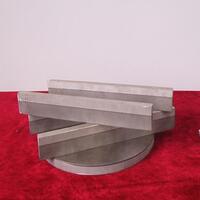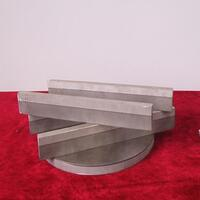1. Introduction
When you hear ‘metal clad,’ your mind might jump to sleek modern homes with corrugated steel siding or industrial buildings wrapped in standing seam metal panels. But ‘metal clad’ is far more than just an aesthetic—it’s a functional engineering solution used across architecture, electrical systems, and heavy industry. From metal clad wire that powers commercial buildings to corten steel facade systems that age gracefully with rust, the term encompasses a wide range of materials and methods.

In this article, we’ll unpack what ‘metal clad meaning’ really entails, compare popular clad metal types like aluminum clad steel and stainless clad aluminum, and explore where you’ll find applications like zinc clad dormers, pac clad standing seam roofs, and even aluminum clad pipe insulation. Whether you’re building a metal clad house or selecting boiler plate steel for a refinery, understanding these nuances matters.
2. What Is Metal Clad? Understanding the Basics
At its core, ‘clad metal meaning’ refers to a composite material made by bonding two or more distinct metals together. This process enhances performance—combining the corrosion resistance of one metal with the strength or cost-efficiency of another. Common methods include roll bonding, explosion bonding, and electroplating.
For example, aluminum clad stainless steel merges the lightweight nature of aluminum with the durability of stainless steel. Similarly, copper nickel clad is often used in marine environments for its anti-fouling properties. These aren’t just theoretical—they’re found in everything from metal nameplates to high-pressure vessels.
3. Architectural Metal Cladding: Aesthetic Meets Function
In construction, ‘metal clad wall’ and ‘metal facade’ systems dominate modern design. Architects favor materials like corten steel siding for its raw, evolving patina, while others opt for zinc metal siding or copper siding for longevity and elegance.
Popular choices include:

- Corten steel facade: Known for its weathering properties; ideal for dramatic exteriors but comes with a higher corten siding cost.
- Zinc clad roof and zinc clad dormer: Low maintenance, recyclable, and develops a soft gray finish over time.
- Colorbond standing seam and PAC Clad HWP: Pre-finished steel systems offering color consistency and durability.
- Vertical standing seam metal siding: Clean lines, excellent water shedding, and commonly used in both residential and commercial metal clad buildings.
These systems often use exterior corrugated metal siding or standing seam facade panels mounted over insulation, creating energy-efficient, visually striking envelopes. And yes—you can absolutely build a full steel clad house using these methods.
4. Industrial and Structural Clad Metals
Beyond aesthetics, clad metals play critical roles in heavy industry. Clad steel—such as stainless steel plate bonded to carbon steel—delivers corrosion resistance where it’s needed most, like in chemical processing tanks or oil refineries.
Common industrial combinations include:
- Aluminum clad steel: Lightweight yet strong; used in automotive and aerospace.
- Titanium clad: Exceptional strength-to-weight ratio and corrosion resistance; common in desalination plants.
- Inconel 625 weld overlay or Inconel 625 plate: Used in extreme heat and corrosive environments.
Materials like 316 stainless steel plate, 6061 T6 aluminum plate, and mild steel plate form the backbone of these systems. Thicknesses vary widely—from 1/8 inch steel plate for light-duty frames to thick steel plate (e.g., 1/4 or 3/16 steel plate) for structural bases.

Specialty plates like diamond plate steel, aluminum tread plate, and perforated plate add slip resistance or ventilation while maintaining clad integrity.
5. Electrical and Utility Applications of Metal Clad
Don’t overlook the role of metal clad in wiring and piping. Metal clad electrical wire—often called MC cable—is armored for safety and permitted in commercial buildings, including in Pennsylvania, provided local codes are followed.
Other utility uses include:
- Aluminum clad wire and CU clad wire: Offer conductivity with added protection.
- Aluminum clad pipe insulation: Combines thermal efficiency with vapor barrier properties.
- PAC Clad column covers and coping: Architectural finishes that protect structural elements while matching the building’s metal facade.
These components ensure durability, fire resistance, and code compliance—especially important in steel clad inc projects or metal clad sheds exposed to harsh conditions.
6. Comparing Key Metal Clad Types
Not all clad metals are created equal. Consider these trade-offs:
- Aluminum clad stainless steel vs. stainless clad aluminum: The former prioritizes weight savings; the latter maximizes surface corrosion resistance.
- Corten steel plate vs. zinc coated steel: Corten forms a stable rust layer; zinc relies on sacrificial protection but requires less initial investment.
- PAC Clad standing seam vs. traditional corrugated steel facade: PAC offers better sealing, longer warranties, and cleaner lines—but at a premium.
Cost, environment, lifespan, and maintenance all influence the best choice. For instance, while corten steel siding cost may deter some, its zero-paint lifecycle appeals to sustainable designers.
7. Conclusion
From the gleam of a copper siding accent to the rugged reliability of clad steel in a refinery, ‘metal clad’ represents a fusion of form, function, and innovation. Whether you’re selecting a metal clad roof for your home, specifying alloy clad plates for industrial use, or running metal clad electrical wire through a commercial wall, understanding the material science behind each option ensures smarter, longer-lasting decisions. As technology advances—think electroless nickel coatings or Inconel weld overlays—the possibilities for clad metals will only expand.
Our Website founded on October 17, 2012, is a high-tech enterprise committed to the research and development, production, processing, sales and technical services of ceramic relative materials such as Metal. Our products includes but not limited to Boron Carbide Ceramic Products, Boron Nitride Ceramic Products, Silicon Carbide Ceramic Products, Silicon Nitride Ceramic Products, Zirconium Dioxide Ceramic Products, etc. If you are interested, please feel free to contact us.
